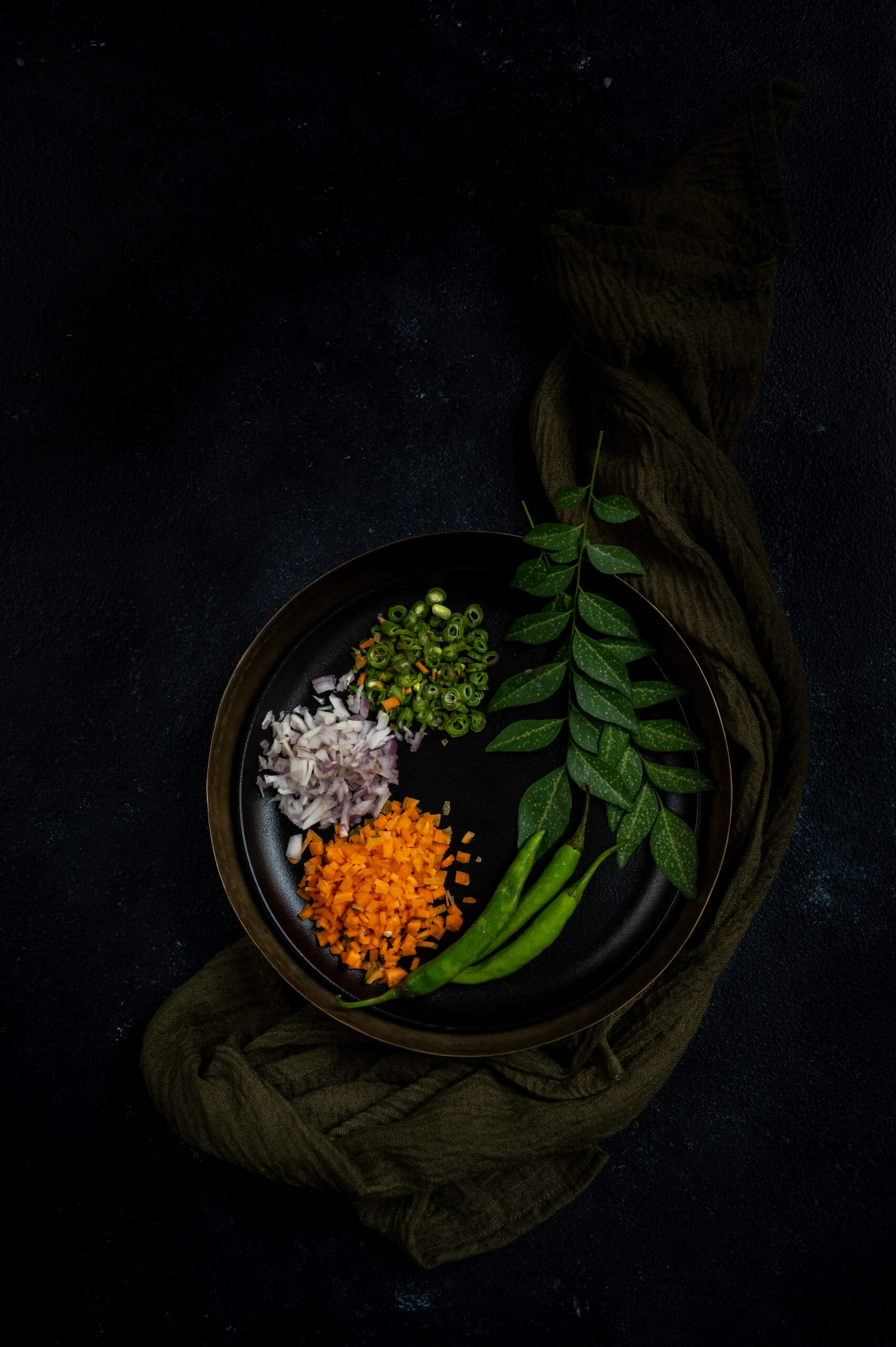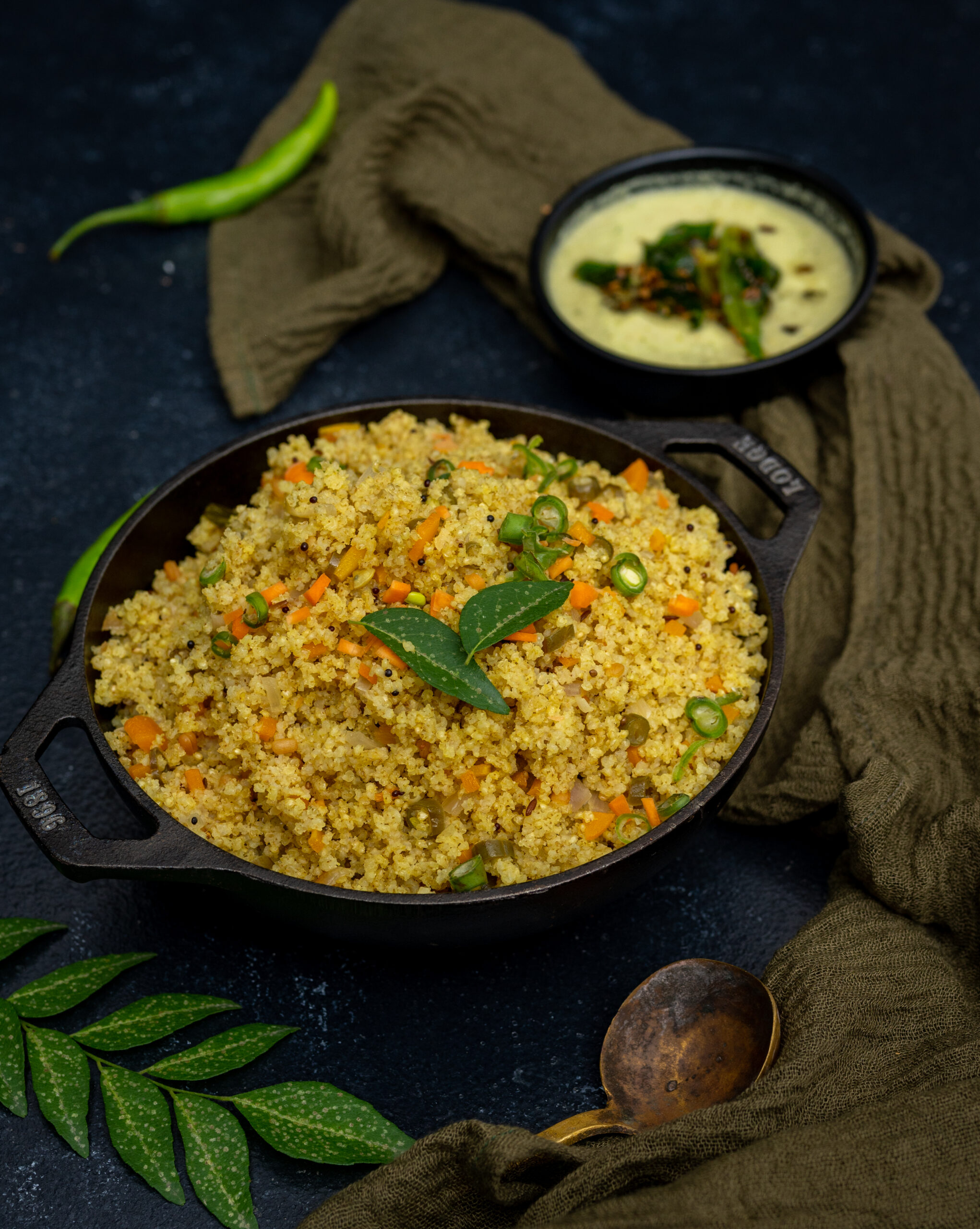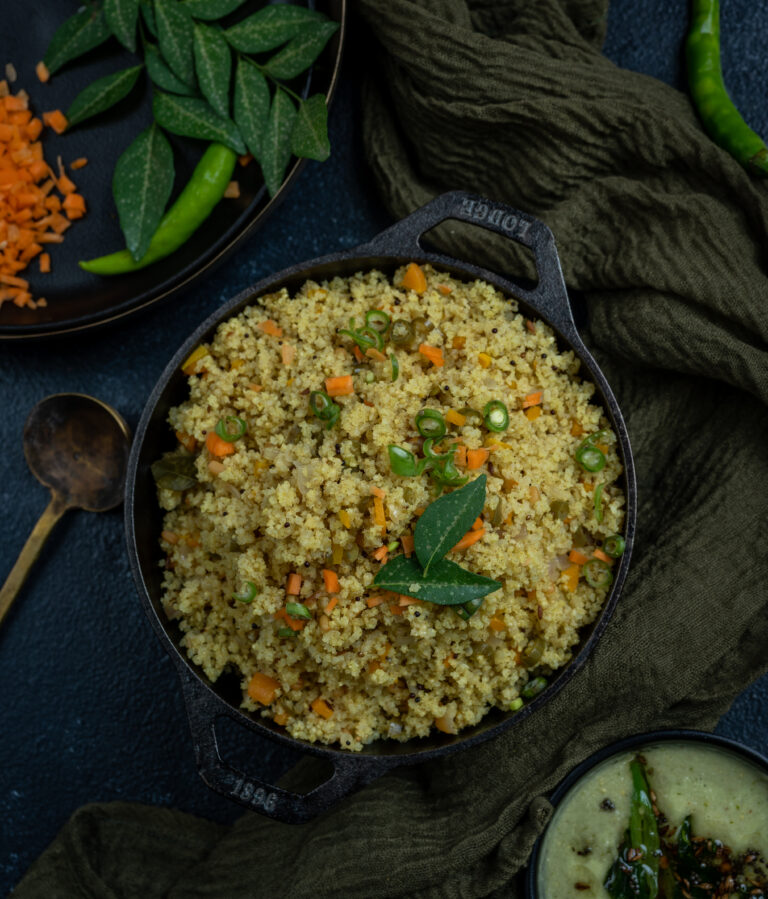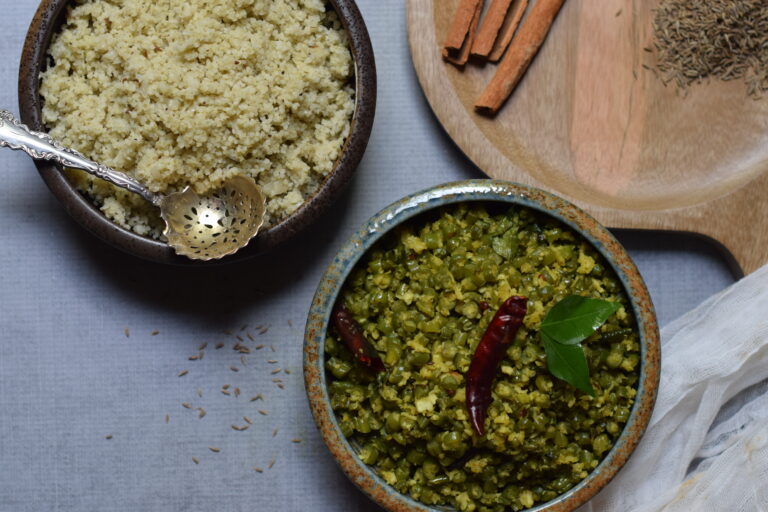After the abundance of sweets, treats and fried foods of Diwali and Navaratri, hopefully accompanied by equally large helpings of blessings and joy, it’s back to trying to eat clean and healthy. This month is all about giving the body’s systems time to settle down before the culinary excitements of Christmas and the New Year beckon again. In this part of the world, this is also a time of rains, which call for immunity-boosting and warming foods as well. With all of this in mind, and taking a cue only from what I’ve been preparing for my family and myself, I’m delighted to share the recipe for a type of comfort food that is ideal for this time of year: millet upma.
Upma is a kind of porridge that is consumed across South India, in several variations. Its base may be semolina, vermicelli, corn, whole wheat or rice. Here, I have chosen to use a millet as the base, specifically the little millet. Millets and soups are perfect for the current weather. While soups are not really a part of the local cuisine, millets have a very long tradition of usage here. I’m quite an advocate for cutting down on white rice consumption in favour of nutritious millets, and you can explore many more millet-based recipes in my blog archives if you’re interested in doing the same.
As well as being a great place to start if you’re new to millets, this dish is also just the perfect way to start your day. Now, the truth is that millets taste healthy, which you know means that the family will fuss over it and make faces – at first. But as I’ve observed from my own grown kids, a millet upma is most welcome at breakfast after a night of partying or feasting. It’s just the kind of thing that calms body and mind, and boosts energy levels at the same time. So I choose a millet upma at the right moment during other times of the year, but it’s whipped up quite frequently in my kitchen in the post-festive period. We also have it as a light dinner, with more vegetables added to the mix. It’s especially great if you’re like me and have dinner early, as the millet gives you energy for the remaining hours of the evening, while still being easy to digest at night.
When cooking millets, the amount of water you add will depend on the size of the grain. Heavier millets – bigger in size and darker in colour – are traditionally used in monsoons and winters as they take more time to digest, hence warm the body for a longer time. However, I’ve chosen a sort of in-between. The little millet, known in Tamil as samai, is a larger grain but has a lighter colour. Use the millet of your preference, and do remember that depending on the type, you may need to pressure cook it or soak it overnight. You will also need to figure out the water level so that the result is a dish that is tender and crumbly. The consistency of the cooked millet should not be sticky.

Millet Upma
(Yield: 2-4 persons)
¾ cup little millet
¼ cup finely chopped onion
¼ cup chopped beans and carrots
2 tablespoons oil
¼ teaspoon mustard seeds
¼ teaspoon cumin seeds
A few curry leaves
1 green chilli
1¼ cups water
A squeeze of lemon juice
Salt to taste
Rinse the millet and set aside. Heat a kadai and add the oil. Once the oil heats up, add the mustard and cumin seeds. Allow them to splutter and then add the remaining vegetables, green chilli and curry leaves.
Cook until the vegetables become tender and then add the water. Once the water has boiled, add the millet. Then add the salt and stir well. Keep the flame low, cover the kadai with a lid, and allow all the water to be cooked. The millet grain should be tender and not sticky.
Add some lemon juice and stir gently. Garnish with coriander leaves and serve hot, and enjoy the taste of a healthy meal that your body will thank you for!
As I said earlier, there is a long history of millet consumption both in India as well as in my household, as shared here on my blog. I hope this millet upma recipe intrigues you into exploring this food category further. I’ve got a whole range, from the traditional – bajra ghensh, seven-grain khichdo, ragi dosa with peanut chutney, chakkara pongal, ragi kanji and little millet rice with green beans poriyal – to the innovative or internationally-inspired – vegan millet thayirsadam, vegan chili and Indian veg millet salad. I’d love to know about your own journey with millets, too!



